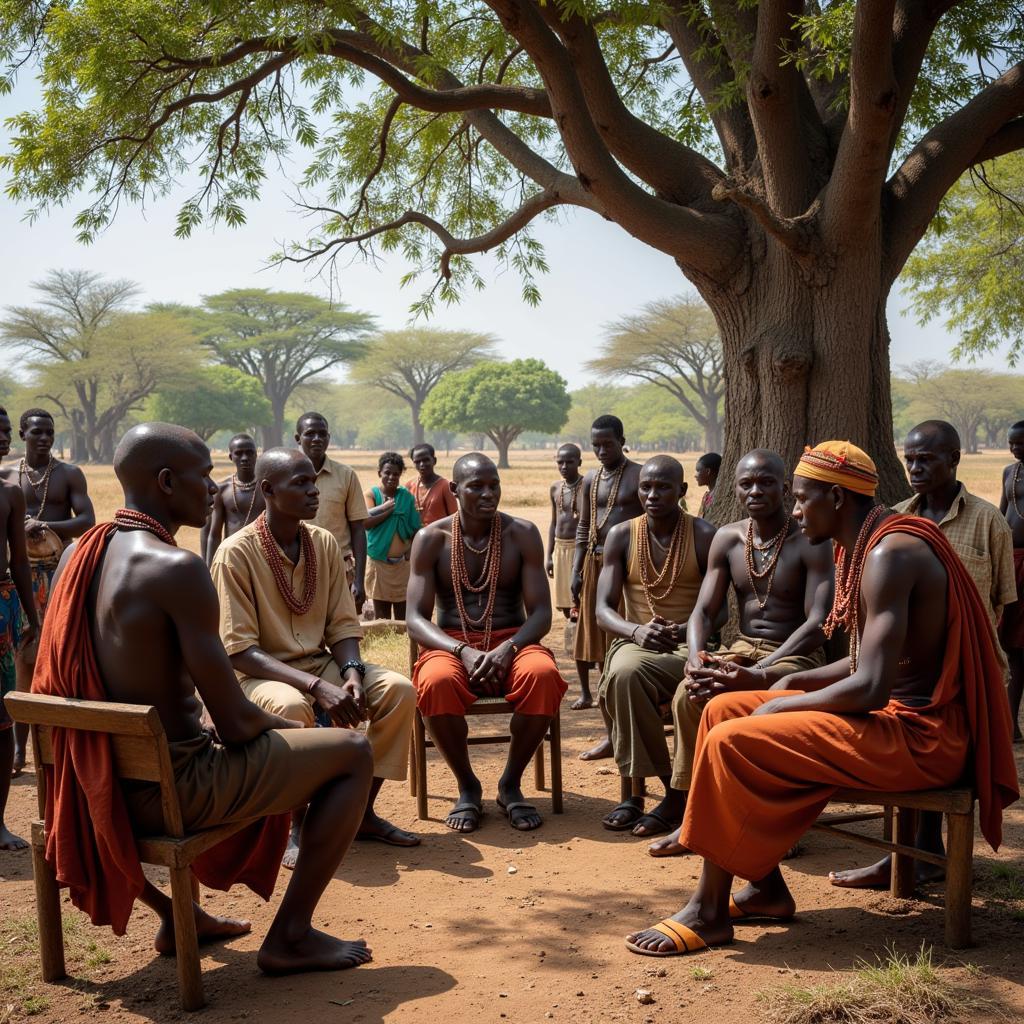The Gentle Art of the African Baby Bath
The African Baby Bath is more than just cleansing; it’s a cherished ritual, a bonding experience passed down through generations. It’s a time for connection, nurturing, and a celebration of new life. From the bustling cities to the tranquil villages, this practice holds a special place in the heart of African families.
A Celebration of Life: Exploring the African Baby Bath Tradition
Across the diverse tapestry of African cultures, the baby bath is rarely a solitary act. It’s a communal affair, often involving grandmothers, aunts, and other female relatives. This shared experience not only strengthens family bonds but also ensures the wisdom and traditions surrounding childcare are passed on to the next generation. These traditions, often rooted in ancient practices and beliefs, vary significantly across the continent, reflecting the unique cultural nuances of each region. The use of specific herbs, the timing of the bath, and the accompanying songs and lullabies all contribute to a rich and meaningful experience. For some families, the bath is a daily ritual, while for others, it may be a weekly or even less frequent event. But regardless of the frequency, the focus remains on the well-being and healthy development of the child.
After this introduction to the general concept, let’s delve into specific aspects of the African baby bath. How is it performed in different regions? What are the common ingredients used? And what beliefs surround this important tradition?
Regional Variations in the African Baby Bath
From North Africa to Southern Africa, the methods and customs surrounding the baby bath differ considerably. In some communities, like certain parts of West Africa, a special wooden bowl carved with intricate designs is used, signifying the importance of the ritual. In others, a simple basin or even a riverbank may serve as the bathing area. The water temperature is also a crucial element. In some cultures, warm water is preferred, while in others, cool water is believed to be invigorating and strengthen the child’s resilience. Some communities in East Africa might incorporate special herbs into the bathwater, believed to possess healing and protective properties, while others might focus on specific massage techniques believed to promote healthy growth.
Natural Ingredients and Their Significance
Many African cultures embrace the use of natural ingredients in baby baths, drawing on the continent’s rich biodiversity. Aloe vera, known for its soothing properties, is often used to treat minor skin irritations. Neem leaves, with their antiseptic qualities, are sometimes added to the bathwater to prevent infections. Other herbs and plants, like chamomile and calendula, are also valued for their calming and healing properties. These natural remedies, passed down through generations, highlight the deep connection between African communities and their environment.
Beliefs and Practices Surrounding the Bath
The African baby bath is often steeped in cultural and spiritual significance. In some communities, the first bath is considered a rite of passage, marking the child’s entry into the world. Specific rituals and prayers may accompany the bath, invoking blessings and protection for the newborn. The water used in the bath may be considered sacred, and its disposal may follow specific customs. These beliefs and practices underscore the profound spiritual dimension of childcare in many African cultures.
Modern Adaptations and Practices
As African families migrate and adapt to new environments, the traditional baby bath practices are also evolving. While the core values of community and connection remain, some families may incorporate modern baby products and techniques into their routines. This blending of tradition and modernity allows families to maintain their cultural heritage while also embracing the benefits of contemporary childcare practices. Finding a balance between the old and the new is key to ensuring the continued relevance of this important tradition.
Conclusion
The African baby bath is much more than just a hygiene practice. It’s a testament to the strength of family bonds, the wisdom of traditional knowledge, and the deep connection between African communities and their heritage. By understanding and appreciating the cultural significance of the African baby bath, we gain a deeper insight into the rich tapestry of life on the continent. From the use of natural ingredients to the spiritual beliefs surrounding the bath, this practice reflects a profound respect for new life and the importance of nurturing future generations.
FAQ
-
How often do African families typically bathe their babies? This varies greatly depending on cultural practices and regional customs, ranging from daily to weekly or even less frequently.
-
What are some common herbs used in African baby baths? Aloe vera, neem leaves, chamomile, and calendula are among the commonly used herbs, valued for their soothing, antiseptic, and healing properties.
-
What is the significance of the first baby bath in some African cultures? In some communities, the first bath is considered a rite of passage, marking the child’s formal entry into the world and often accompanied by specific rituals and prayers.
-
How are traditional African baby bath practices adapting in modern times? As families adapt to new environments, they often blend traditional practices with modern baby products and techniques, creating a unique blend of old and new.
-
What is the cultural significance of the African baby bath beyond hygiene? The African baby bath is a powerful symbol of community, family bonding, and the transmission of cultural knowledge and traditions across generations.
Common Scenarios and Questions
-
Scenario: A new mother is unsure about the best way to bathe her baby using traditional methods. Question: What are the steps involved in a traditional African baby bath, and what precautions should be taken?
-
Scenario: A family has recently migrated and wants to maintain their baby bath traditions in their new environment. Question: How can we adapt our traditional practices to our new surroundings while still preserving their cultural significance?
Further Exploration
You might also be interested in learning about other aspects of African culture, such as African design wallpaper or African landscape photography. For those interested in health topics, you can read more about African American skin rashes or African American pregnancy symptoms. And for pet lovers, information on African grey feather plucking can be found on our site.
Contact Us
For any further assistance or inquiries, please do not hesitate to contact us. You can reach us by phone at +255768904061 or email us at [email protected]. You can also visit our office located in Mbarali DC Mawindi, Kangaga, Tanzania. Our dedicated customer service team is available 24/7 to address your needs.


